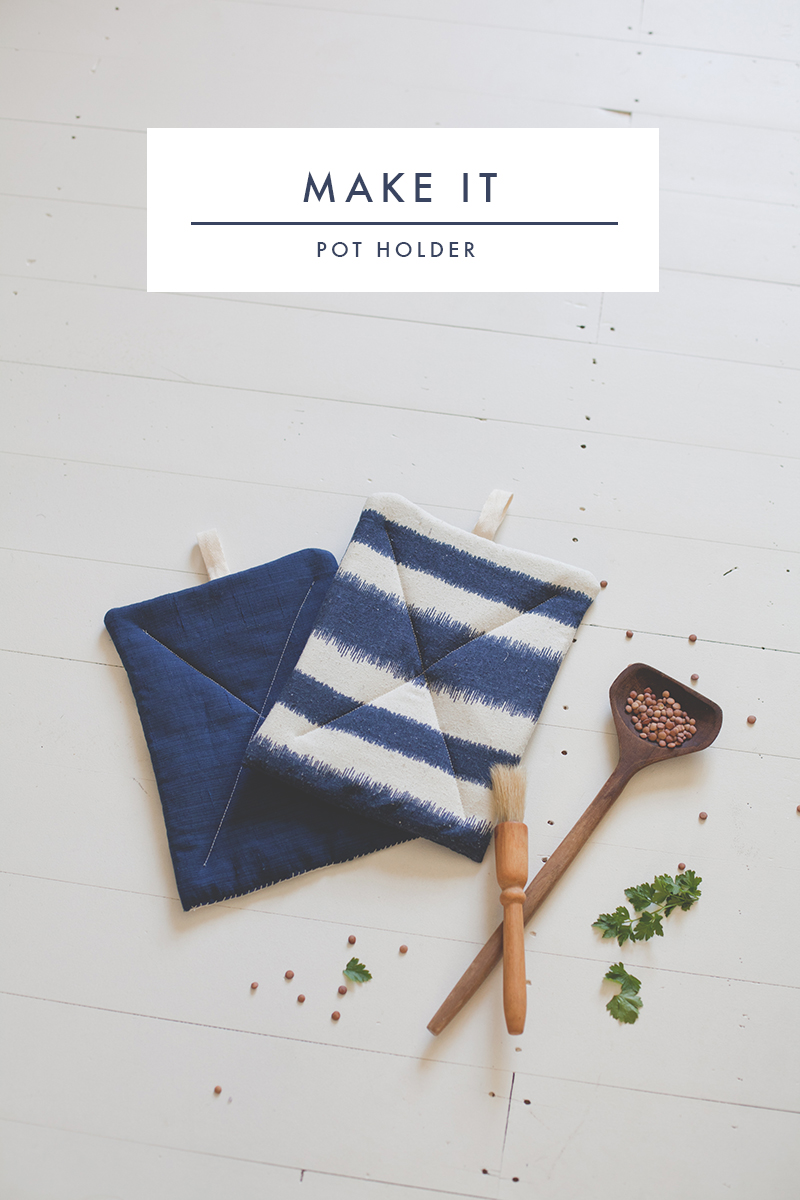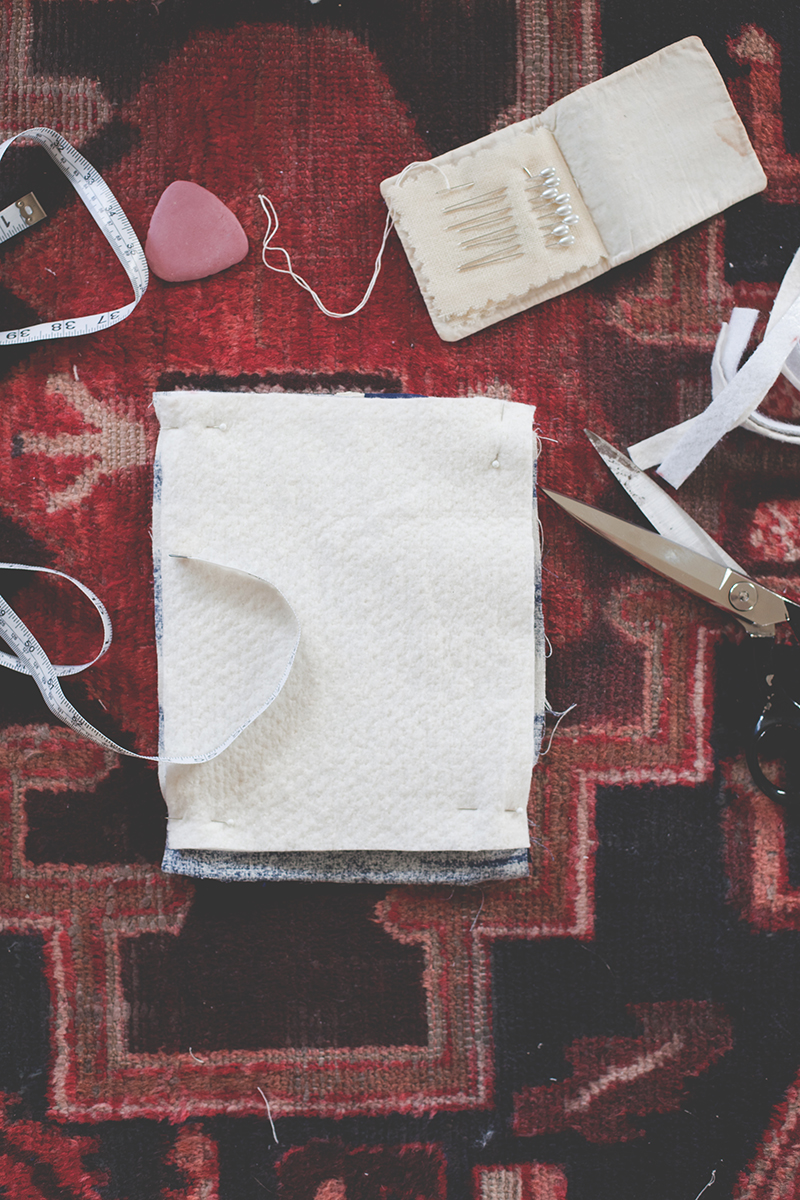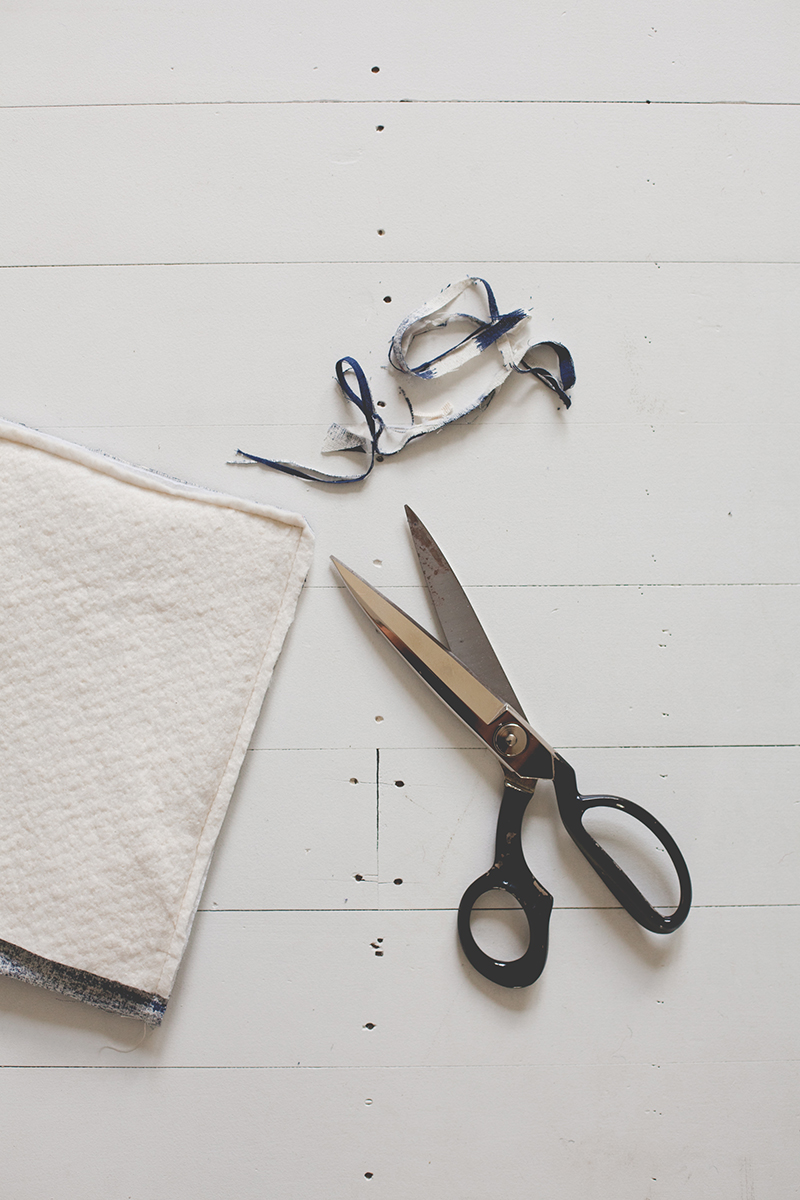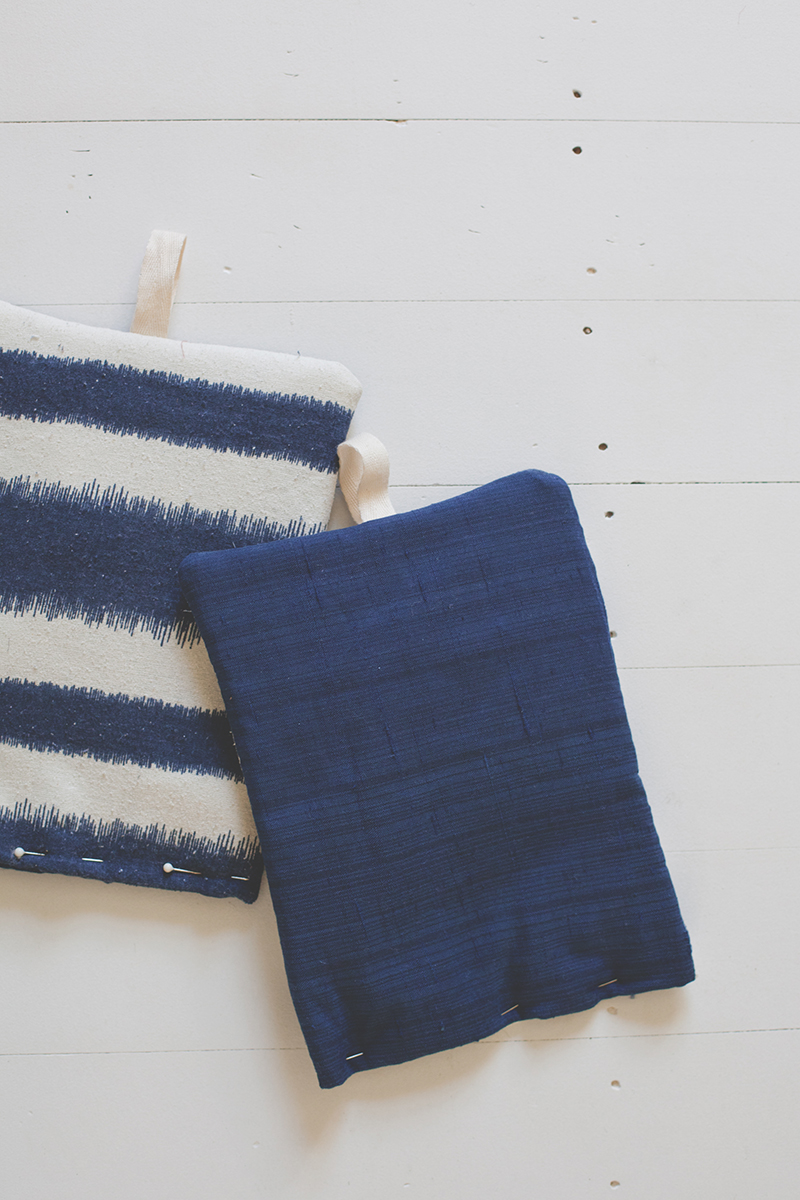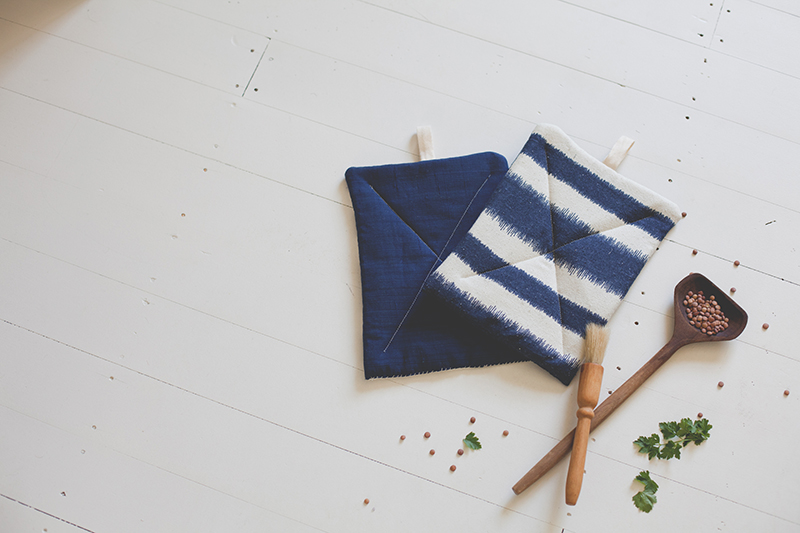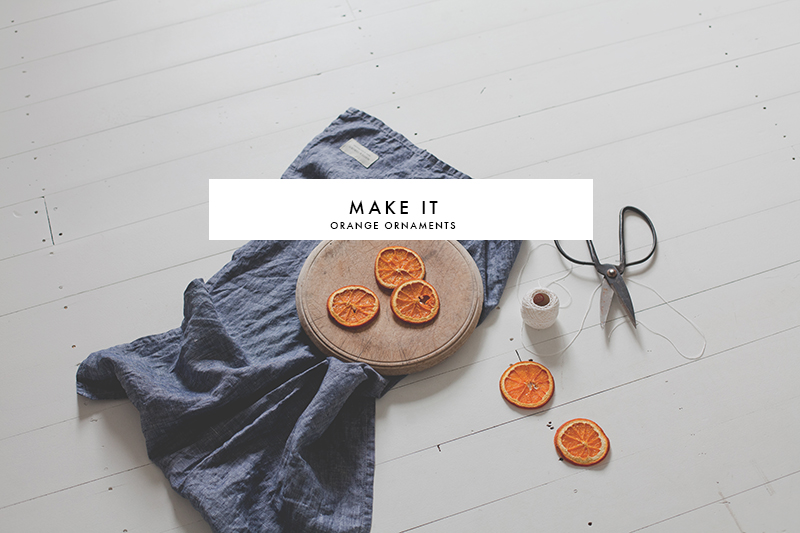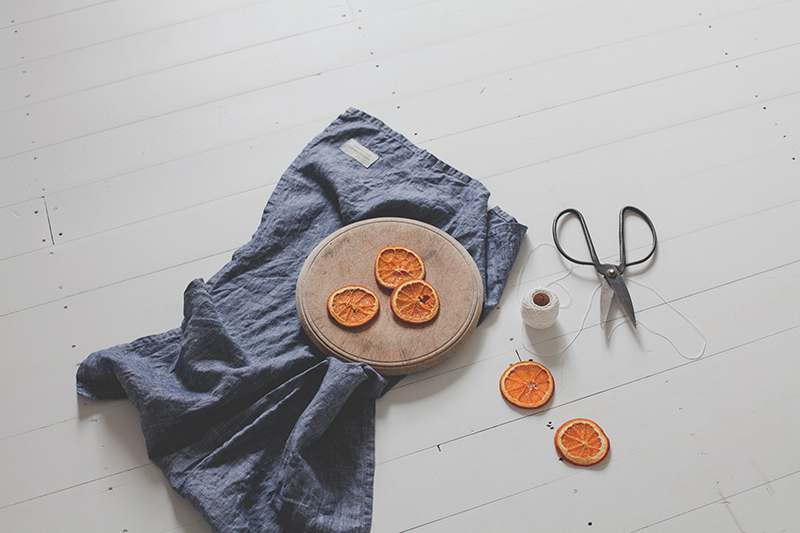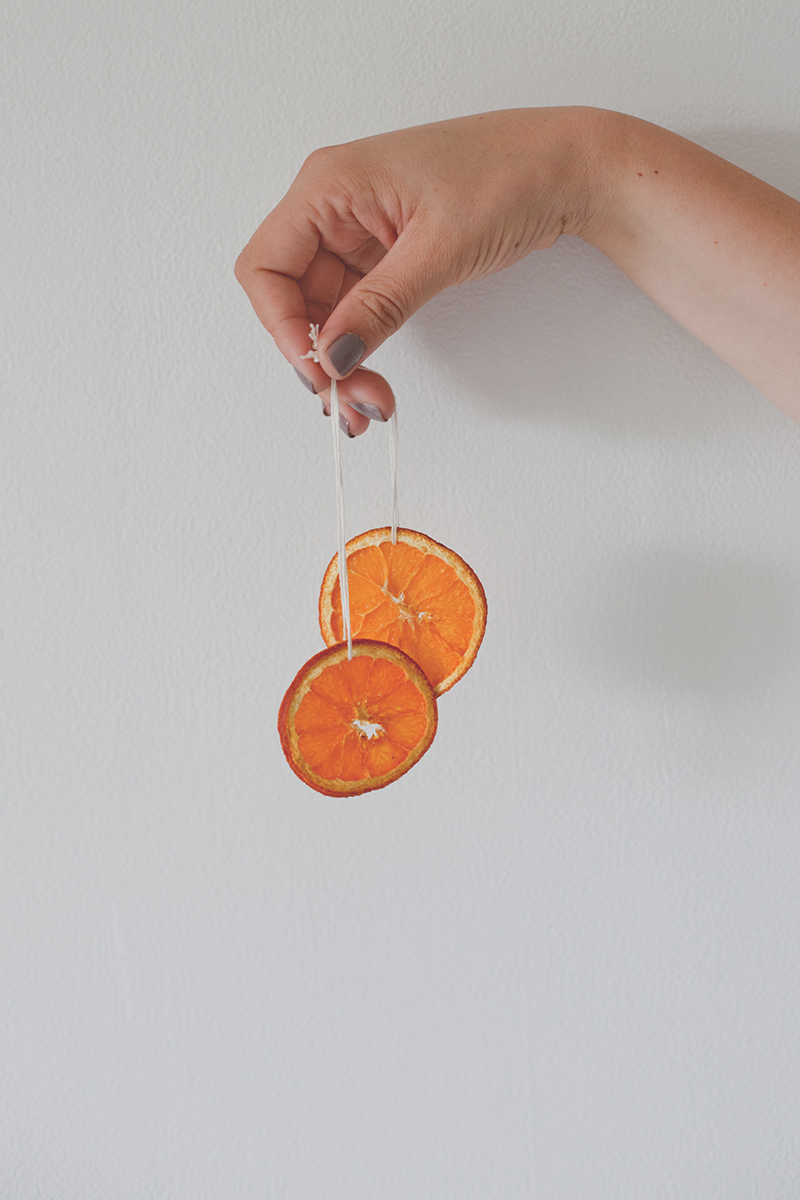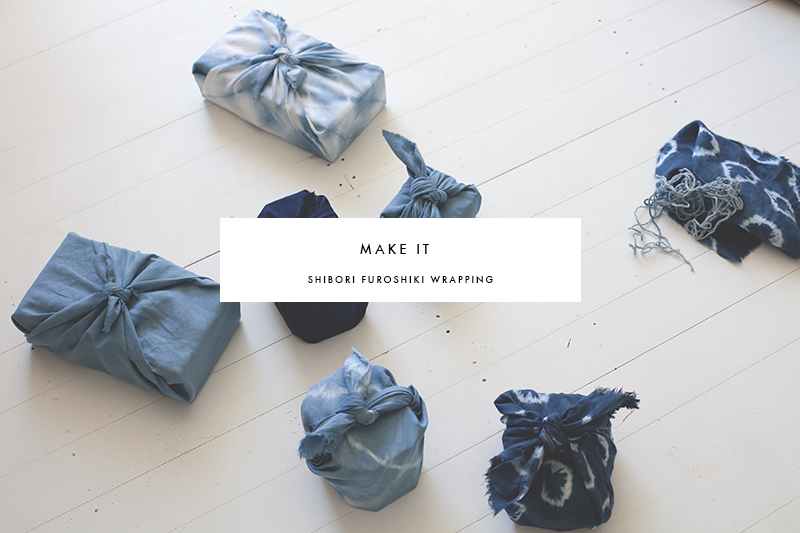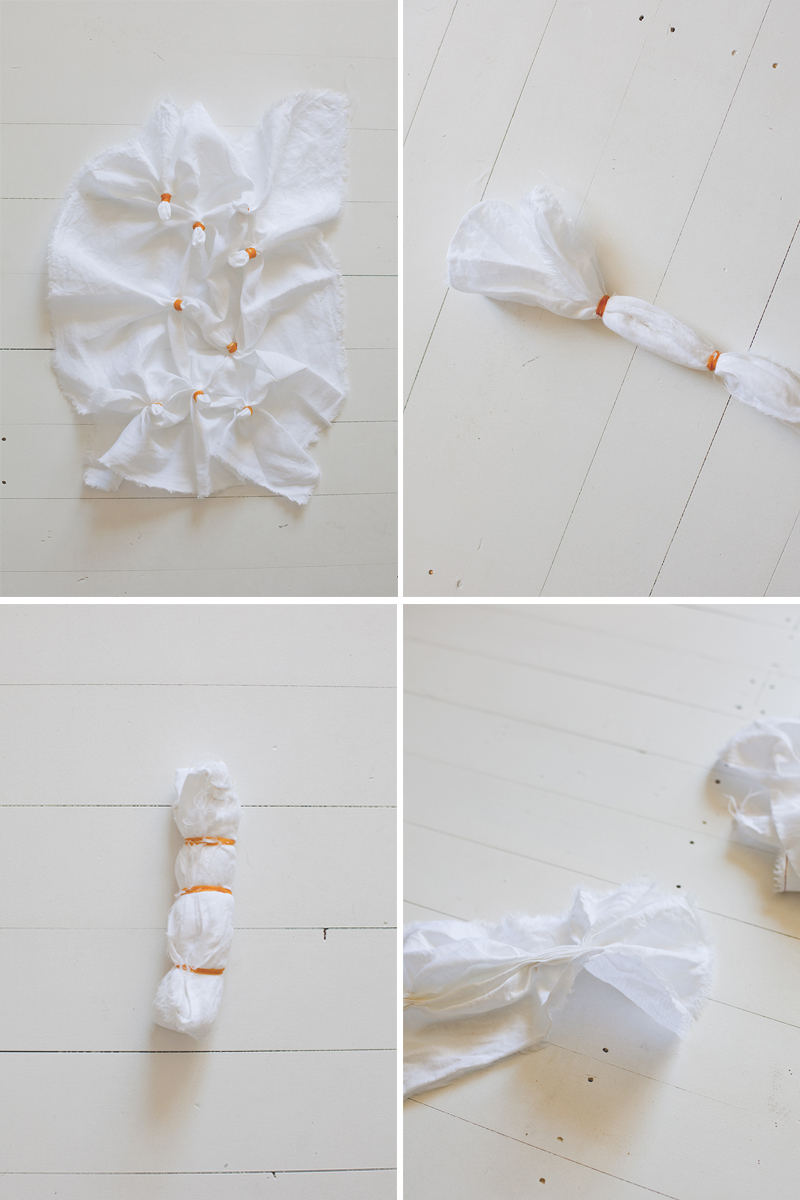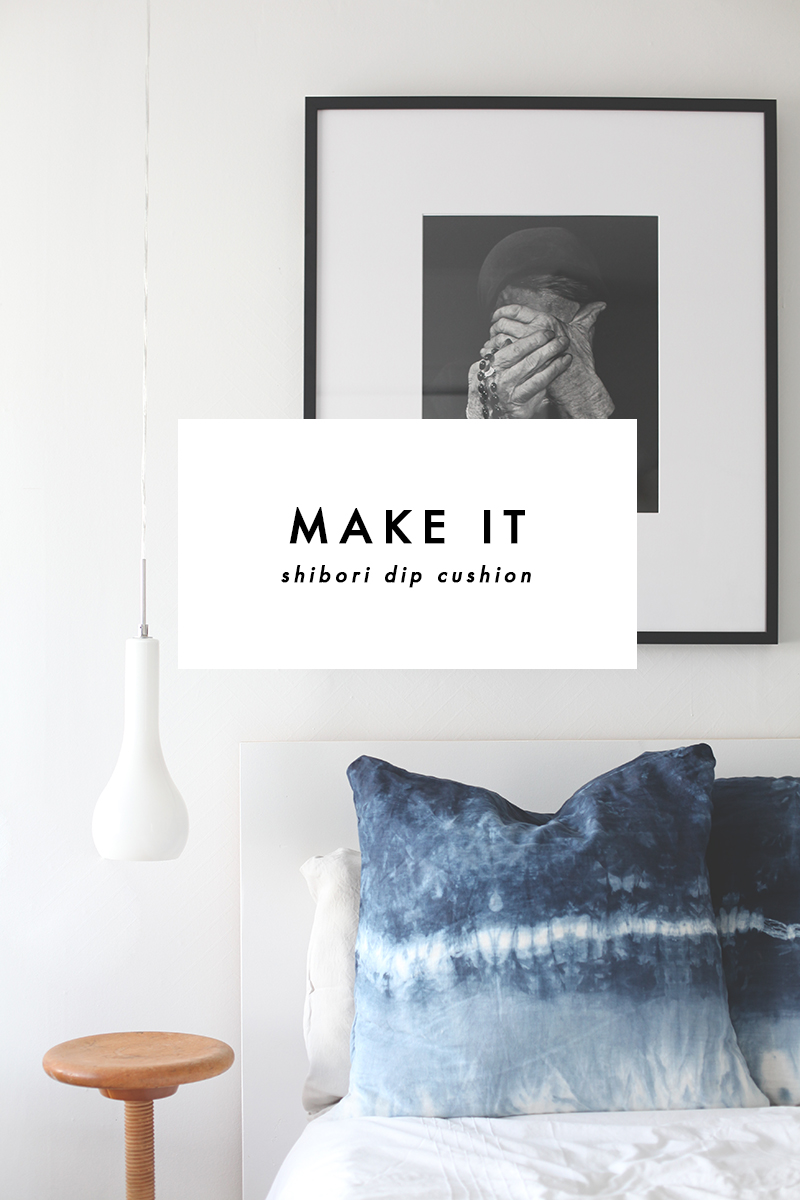
Even as winter rolls in, I am loving this summer shade of indigo. Injecting a little colour into my otherwise neural house is as easy as some beautiful linen cushions and a little dye.
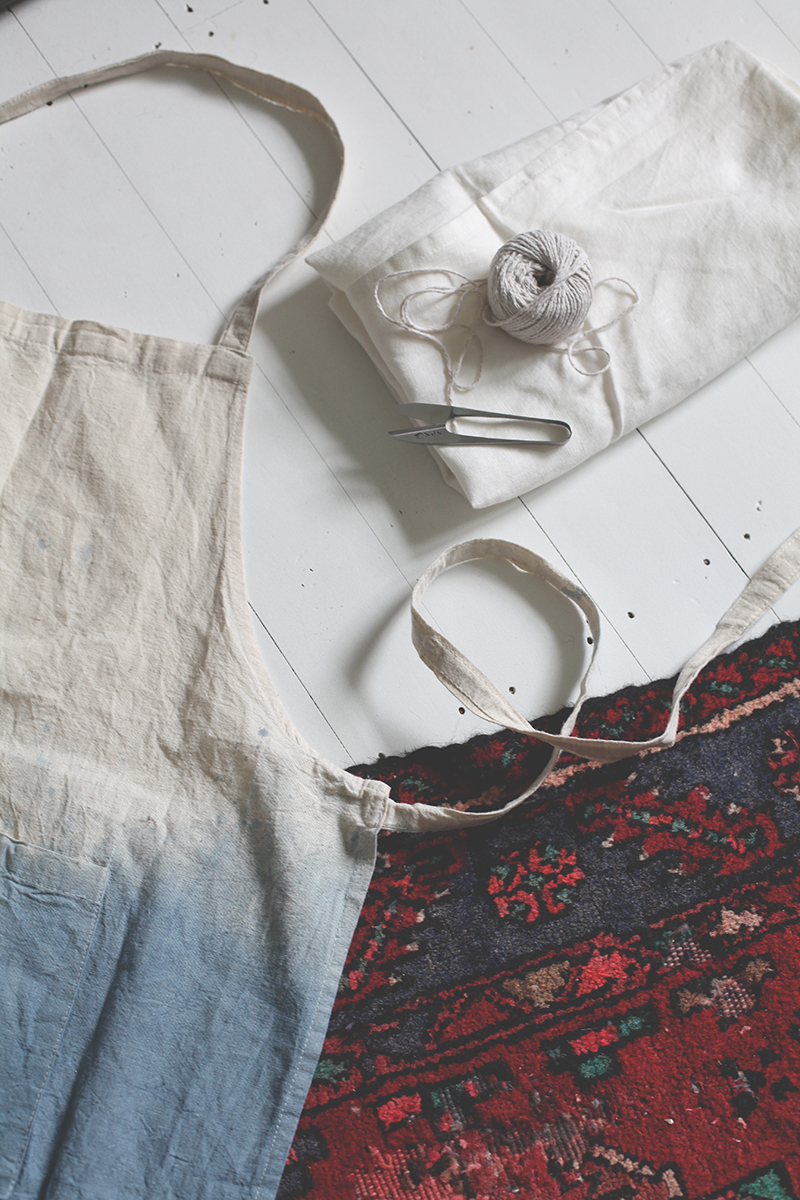
Here is what you will need : Two linen cushion covers – I chose euro size from Citta Design, one packet of Blue Jeans by DYLON Fabric Dye, snips or scissors, salt, string, a couple of buckets and rubber gloves.
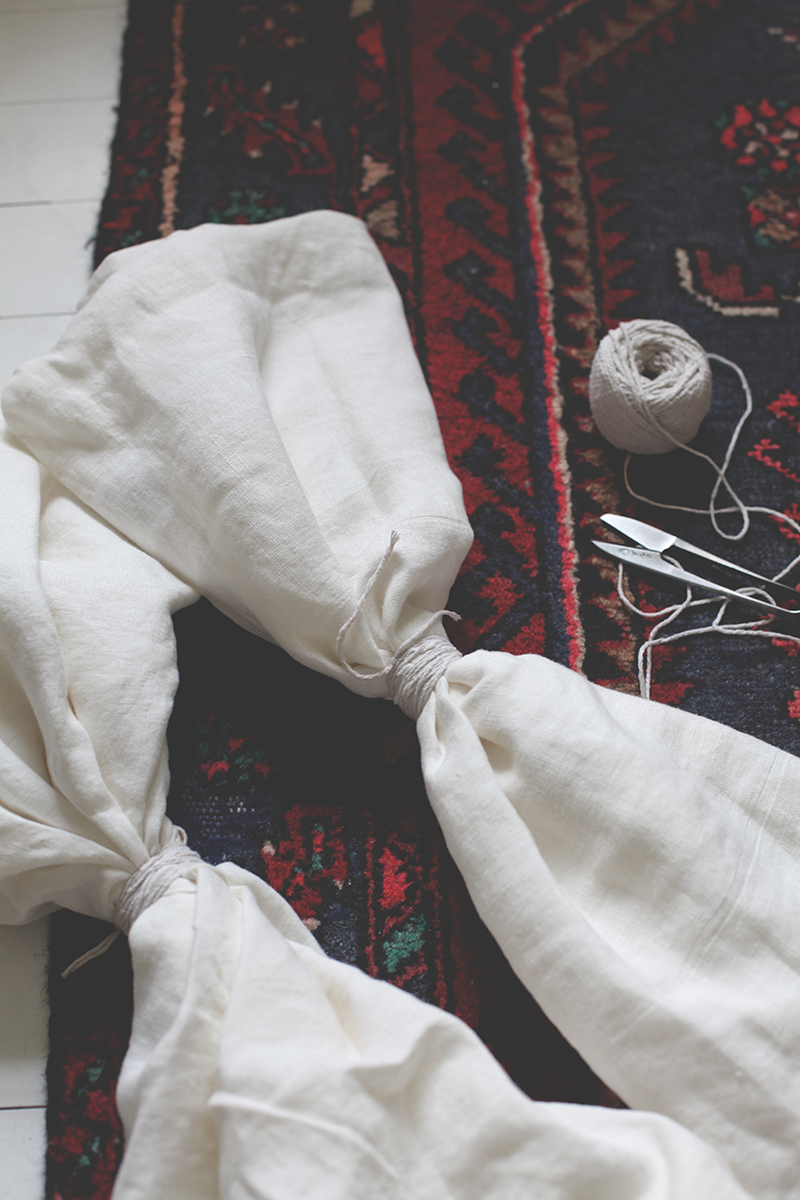
Taking your pre washed cushion covers, simply bunch through the middle and tie firmly with your string. Note : Any gaps in the string will let the dye through, also the tighter you tie it, the less dye that penetrates.
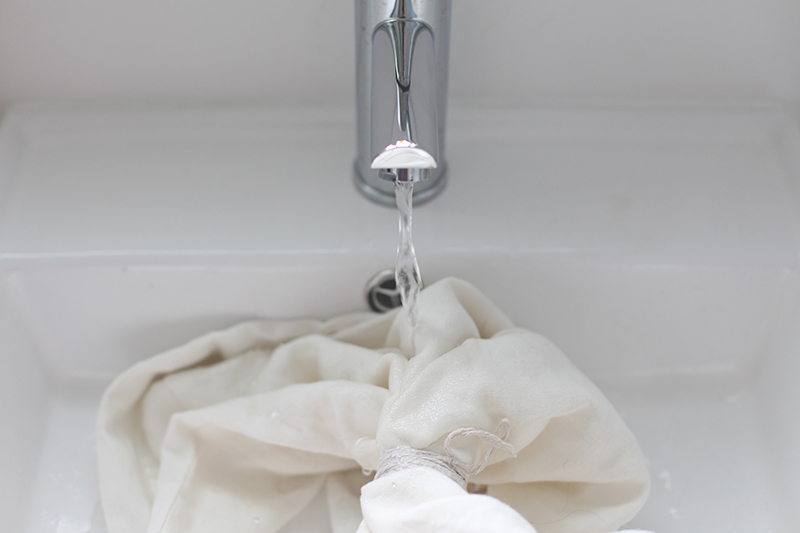
Next, wet the covers and ring out. This will create more of a gradual line, a dry piece of fabric will have a far blunter transition.

Follow the instructions on your particular dye packet to mix your dye.
Next, dip half your cover and allow to soak for 45 minutes . At this stage you can push a little more of the cover under the dye, and soak for another 10 minutes. Lift out and leave them to hang over another bucket with the undyed end at the bottom. Gradually your dye will seep down, the longer you leave it, the more dye fades over the white. Make sure you dry somewhere out of the sun. DO NOT take the string off until the fabric is dry!

And there you have it! Fresh summer cushion covers all year round!
Until next time


